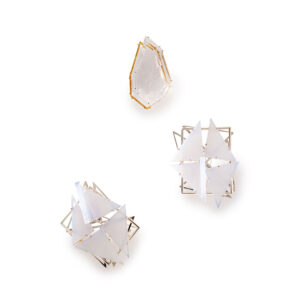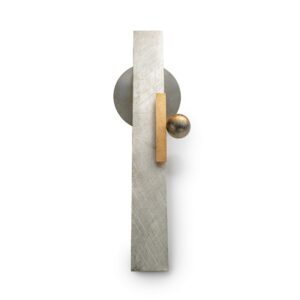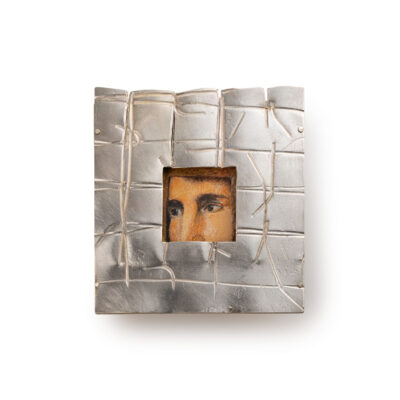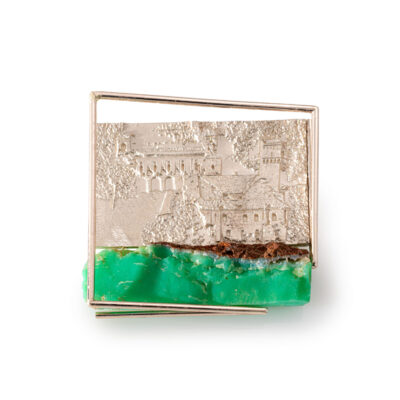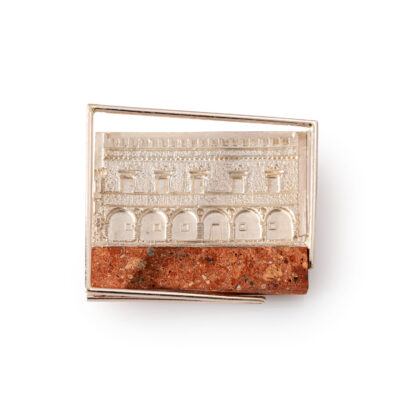Marzia Banci, Guidubaldo I da Montefeltro
Spilla, 2023, argento 925, argento dipinto, oro 750, diamanti neri e gialli taglio a brillante, largh. 7 cm × h. 7 cm
La spilla realizzata per Guidubaldo I, unico figlio maschio di Federico da Montefeltro e della sua seconda moglie Battista Sforza, è caratterizzata da una base quadrata spartita in quattro sezioni da altrettanti archetti di oro giallo: su tre archetti sono incastonati diamanti neri, che identificano la casata dei Montefeltro, su uno sono incastonati diamanti gialli, che alludono alla saggezza di Guidubaldo nell’accettare già in vita l’innesto con la casata Della Rovere adottando Francesco Maria I e assicurando la continuità del Ducato. Al centro della spilla è collocato lo sguardo del Duca, dipinto su lastra di argento. La composizione è caratterizzata da un’ampia cornice di argento: sul lato destro, in basso, sono applicati elementi di oro giallo che simboleggiano le imprese militari del Duca, infatti, sono incisi con segni che ricordano la maglia di ferro solitamente indossata in battaglia. Guidubaldo è riconosciuto come duca degnissimo nella cultura, nella politica e nella guerra.
Marzia Banci, Cesare Borgia
Spilla, 2023, argento 925, argento dipinto, largh. 6,5 cm × h. 7 cm
La spilla dedicata a Cesare Borgia, di forma quadrata, è realizzata in argento inciso con linee orizzontali e verticali e accoglie, al centro, il ritratto del suo sguardo che ben ne esprime la personalità: uomo spietato e senza scrupoli, dedito alla guerra, fu sempre alla ricerca del potere, del possesso e della gloria.
Figlio di papa Alessandro VI, sottrasse con l’inganno il Ducato a Guidubaldo I: la spilla, infatti, ha le estremità deflagrate per sottolineare l’abuso esercitato sul Ducato e le angherie compiute durante il suo breve governo.
Marzia Banci, Bassorilievi dei palazzi Ducali
Spille, 2023, argento 925, crisoprasio, mattone, largh. 7 cm × h. 6 cm
Le spille costituiscono un omaggio ai luoghi dove i Duchi di Urbino abitarono durante il loro governo.
Sono costituite da una base rettangolare delimitata da una stretta cornice aperta nell’angolo inferiore destro; la cornice vuole essere un filo di luce che contiene ed evidenzia la facciata di ciascun Palazzo Ducale.
Al centro della spilla è collocato il bassorilievo, ciascuno poggia le fondamenta su una pietra o un minerale: Villa Imperiale di Pesaro su crisoprasio Palazzo Ducale di Pesaro su mattone.
I bassorilievi sono realizzati in fusione dopo un’attenta ricostruzione dell’immagine in cera.



